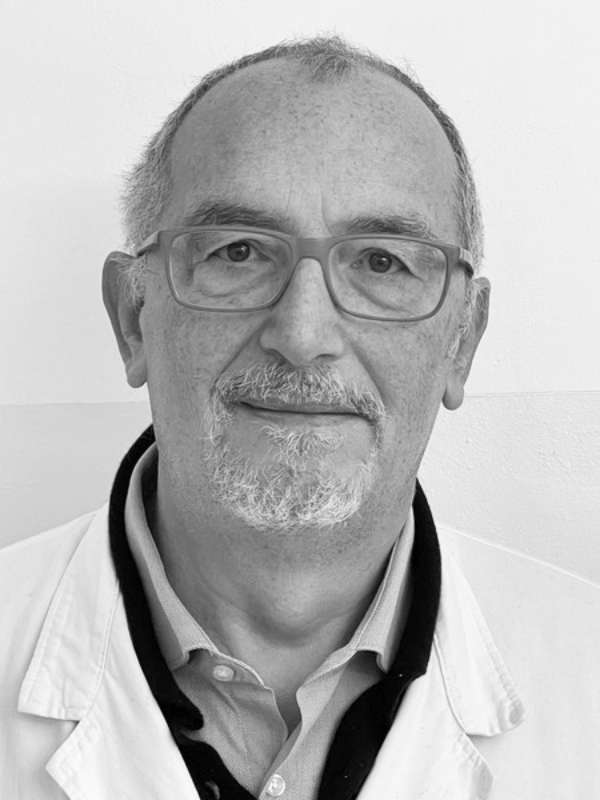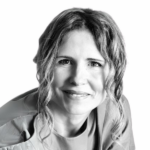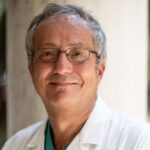Medical doctors and Surgeons
Capaldi, overcoming cancer with new stem cell therapies
«There are a lot of innovative ideas in research and we are about to see encouraging results»
Antonio Capaldi, Head of the Complex Structure of the Carmagnola Hospital, specialised in oncology and haematology
Cancer is a disease that usually affects adult and elderly people, and is known as a malady typical of the modern era. Up until a century ago, the average age was less than 60 years; now it is 80-90, and tumours have more opportunities to develop. Antonio Capaldi, Head of the Complex Structure of the Carmagnola Hospital, specialised in oncology and haematology and responsible of the multidisciplinary oncology day hospital of Candiolo, narrates his experience in fighting cancer.
What are tumours and what causes them

«Tumours are generated by a mutating cell, and probably by a compromised immune system» Antonio Capaldi explains. «There may be mutations called exogenous that derive from causes external to our body» he continues, highlighting that there are up to 400 substances classified as carcinogenic or potentially carcinogenic. Such elements are closely monitored in high-risk work places (such as foundries and construction sites) and also in the environment; however, completely removing them is nigh impossible. There needs to be compromise and make sure that their quantity stays under a safe threshold to prevent disease.
«There are also mutations called endogenous, meaning mutations that we inherit from our family. For example, there are two mutations called BRCA1 and BRCA2 that increase the risk of developing breast cancer in those who have them» the doctor said. These diseases then are not caused by external agents but are essentially “casual”.
In both cases, prevention is one of the most effective weapons against cancer. In the case of exogenous tumours, it is pivotal to make sure that employers meticulously follow the directives against carcinogens to protect workers, and those that improve quality of air in cities. In case of endogenous tumours, the most important thing is to know one’s own family medical history and do routine check-ups. Nevertheless, Capaldi says that it is impossible to completely eradicate this pathology. «There are countless carcinogens in the environment paired with unhealthy lifestyles which make intervention more difficult».
Working with stem cells to counter cancer
M.D. Antonio Capaldi developed a profound knowledge of organ transplantation, having worked for more than 25 years in the field. One of the best weapons against cancer lays in stem cells. «Working in the stem cells field requires a tight collaboration with many professional figures, from oncology and haematology specialists to transfusion centres, to laboratory technicians, even to biologists based on the type of transplantation required. There is a data bank that can be accessed by everyone who deals with transplantation in order to find compatible donors» Capaldi explains.
There are two types of transplantations executed with the aid of stem cells. The first one, called autologous, involves that the cells used are those that belong to the patient. After cancer’s first remission, «a particularly aggressive chemotherapy is used to completely destroy bone marrow cells, and to reset haemopoiesis [ed. The process of creating blood cells takes place in the bone marrow], stem cells are reinfused after a number of days from therapy.»
On the other hand, allogeneic transplantations are more complex and require stem cells directly from compatible donors. «The reasoning behind allogeneic transplantation is to introduce the concept of adoptive immunotherapy, that is in addition to the classic chemotherapy the immune system is also used to provoke a response against the patient’s cancer cells, with great results» Capaldi tells, highlighting the results achieved by research in the last years.
It is important to convince mothers to donate the umbilical cord after pregnancy, as it has many stem cells that may help people in need of allogeneic transplantations. Even if a single cord does not have enough stem cells to support a full surgery, «collecting the cells from umbilical cords increases the possibility to find compatible donors in the future, as it makes it easier to find them in international data banks» the oncologist says, explaining that the process is generally very safe.
Research and cancer, what lies in the future
Research against cancer is one of the fields of medicine accruing the most investments, considering the social impact of the disease considered “one of the ills of our time”. And continuous research produced new therapies and methods to heal people affected by cancer without the tremendous side effects common in the past years. «New molecular targeted therapies can kill tumour cells» Capaldi says, and are used in the treatment of various kinds of cancers without chemotherapy’s side effects. Diseases such as chronic myeloid leukaemia, which used to be lethal, can now be controlled and guarantee patients «a long life, often with no continuous therapy.»
Another approach is “immunotherapy”, a new method to counter cancer that consists in using the patient’s immune defences. «We use medicines that improve the efficacy of the patients’ immune systems against tumours, showing incredible results without chemotherapy» the oncologist claims- This therapy, used against lung and endometrial cancer, started a new line of research: artificial strengthening of the immune system using “cell engineering” methods.
In conclusion, Capaldi believes that the future of oncology is bright, as well as that of patients, considering the great scientific progress made by scientists in using stem cells and other innovative therapies against cancer. However, the doctor warns that sharing information about new protocols and discoveries is the basis of research, as collaboration is a hotbed of innovation. «The continuous sharing of information must be implemented everywhere and should depend on every centre» he concludes, citing the virtuous example the strict cooperation between the Hospital of Carmagnola, the Hospital of Candiolo and the Hospital of Molinette which are profoundly interconnected when it comes to sharing new protocols and therapies to end cancer once and for all.





































